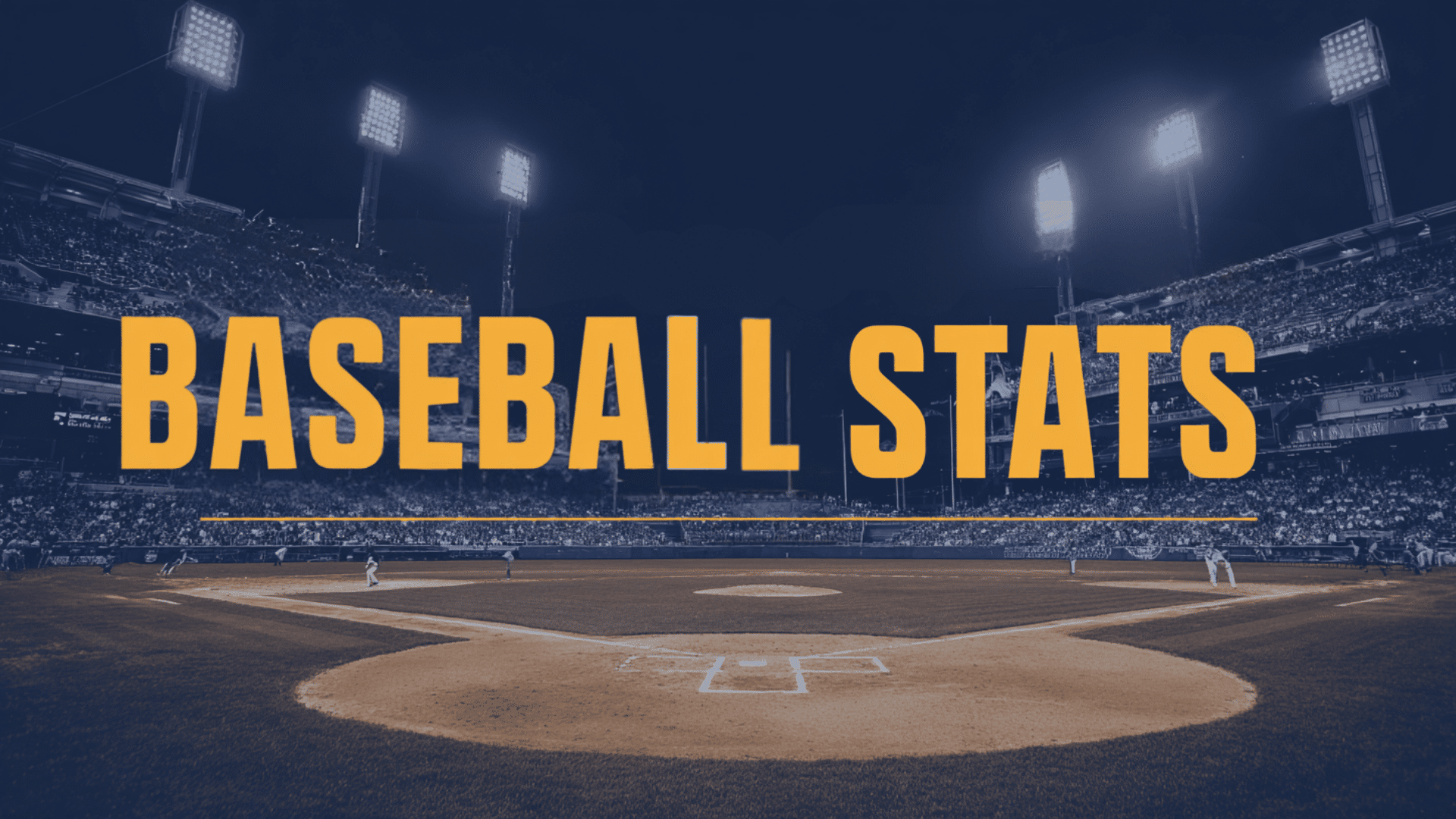Ever looked at a baseball scoreboard and wondered what those numbers really mean?
You’re not alone. Baseball is full of numbers that can seem confusing at first glance. But understanding baseball stats is easier than you think.
These numbers tell the story of every game, player, and season. Stats help fans follow their favorite players and teams in a deeper way.
They also help coaches make smart decisions about lineups and strategy. Once you know what the basic numbers mean, watching baseball becomes much more exciting and fun.
Why Baseball Stats Matter
Baseball stats are the language of the game. Every pitch, swing, and catch gets turned into numbers that tell a story.
For fans, stats help you understand which players are having great seasons and which teams are likely to win. Teams use these numbers to decide which players to sign and how much to pay them.
Sports writers and TV announcers rely on stats to explain what’s happening during games.
The importance of baseball statistics goes beyond just numbers on a scoreboard. They help everyone understand the game better and make it more enjoyable to watch.
Basic Hitting Stats Explained

Hitting stats show how well batters perform at the plate. These are the numbers you’ll see most often on scoreboards and websites.
1. Batting Average (AVG)
Batting average measures how often a player gets a hit. The formula is hits divided by at-bats.
A batting average of .300 means the player gets a hit 3 out of every 10 times at bat. Most people think .300 is excellent, .280 is good, and .250 is average.
2. Runs Batted In (RBI)
RBI counts how many teammates a player helps score. When you hit and a runner comes home, you get an RBI. Fans love this stat because it shows how clutch a player is.
Good hitters usually have 80-100 RBIs per season.
3. Home Runs (HR)
Home runs are the most exciting hits in baseball. When a batter hits the ball over the fence, it’s a home run. Everyone scores, including the batter. Players who hit 30+ home runs in a season are considered power hitters.
4. On-Base Percentage (OBP)
OBP shows how often a player reaches base safely.
This includes hits, walks, and hit-by-pitches. Smart teams care more about OBP than batting average. Getting on base any way possible helps teams score more runs.
Pitching Stats You Need to Know
Pitching stats tell you how well pitchers stop the other team from scoring. These numbers are just as important as hitting stats.
1. Earned Run Average (ERA)
ERA measures how many runs a pitcher gives up per nine innings.
The formula is earned runs times 9, divided by the number of innings pitched. An ERA under 3.50 is considered good. The lower the ERA, the better the pitcher is at preventing runs.
2. Strikeouts (K)
Strikeouts happen when a batter swings and misses three times or doesn’t swing at three good pitches.
Pitchers love strikeouts because the ball stays in play less. Great pitchers often strike out 200+ batters per season. Strikeouts in baseball demonstrate a pitcher’s dominance over hitters.
3. Wins and Losses (W-L)
This stat tracks how many games a pitcher wins or loses when they start.
But this can be misleading because pitchers need good hitting and defense to win games. A pitcher can throw well but still lose if their team doesn’t score runs.
Fielding Stats Made Simple
Fielding stats measure how well players catch balls and make plays on defense. Good defense wins games just like good hitting and pitching.
1. Fielding Percentage
Fielding percentage shows how often a player makes a clean play without an error. The formula is successful plays divided by total chances.
A fielding percentage of .970 means the player makes the play 97 out of 100 times. Most major league players have fielding percentages above .950.
2. Errors (E)
Errors happen when a fielder makes a mistake that lets the other team reach base or score. Common errors include dropping easy fly balls or throwing the ball over a teammate’s head.
Teams with fewer errors usually win more games because they don’t give opponents extra chances.
Advanced Baseball Stats
Modern baseball utilizes advanced statistics, known as sabermetrics, to measure player value more accurately. These numbers may seem complex, but they provide a clearer picture of how skilled players truly are.
Key advanced stats every fan should know:
- OPS combines on-base percentage and slugging – measures overall offensive value
- WAR shows total player value – compares players to replacement-level teammates
- WHIP measures pitcher control – walks plus hits per inning pitched
- Exit velocity tracks ball speed – shows how hard batters hit balls
- Launch angle measures ball trajectory – helps predict home run potential
These advanced numbers enable teams to make more informed decisions about trades, signings, and strategy. You don’t need to memorize all of them, but understanding the basics makes watching games more interesting.
Quick Reference Chart
Here’s a simple chart to help you remember the most important baseball stats and what they mean:
| Stat | Stands For | What It Means | Good Benchmark |
|---|---|---|---|
| AVG | Batting Average | Hits per at-bat | .300+ |
| RBI | Runs Batted In | Teammates driven home | 80+ |
| HR | Home Runs | Balls hit over the fence | 25+ |
| ERA | Earned Run Average | Runs allowed per 9 innings | Under 3.50 |
| K | Strikeouts | Batters struck out | 150+ |
| OBP | On-Base Percentage | The times reached base safely | .350+ |
| OPS | On-Base Plus Slugging | Overall offensive value | .800+ |
| WAR | Wins Above Replacement | Total player value | 3.0+ |
Keep this chart handy when watching games or reading about your favorite players. These benchmarks apply to full seasons, not individual games.
Note: These benchmarks can vary based on the era, league, and ballpark conditions.
Tips for Reading Baseball Stats Like a Pro
Learning to read stats takes practice, but these simple tips will help you understand what numbers really matter most.
Smart ways to analyze baseball statistics:
- Compare multiple stats together – never judge players on just one number
- Consider ballpark effects – some stadiums help hitters or pitchers more
- Look at recent trends – hot streaks and slumps tell current stories
- Factor in defensive contributions – good fielding prevents runs, too
- Check sample sizes – small samples can be misleading early in seasons
Remember that context matters just as much as the raw numbers. A .250 batting average might be excellent for a shortstop who plays great defense, but disappointing for a designated hitter whose only job is hitting.
Conclusion
Understanding baseball stats doesn’t have to be overwhelming or confusing for new fans.
Start with the basics like batting average, ERA, and home runs, then gradually learn more advanced numbers as you watch more games.
These statistics help you appreciate great performances and understand why certain players are more valuable than others. You don’t need to memorize every formula or become a math expert to enjoy baseball more.
The most important thing is knowing that stats tell stories about players, teams, and games that make baseball more exciting to follow.
Ready to put your new knowledge to the test? Which baseball stat do you find most interesting, and what questions do you still have about reading the numbers? Share your thoughts in the comments below!






































